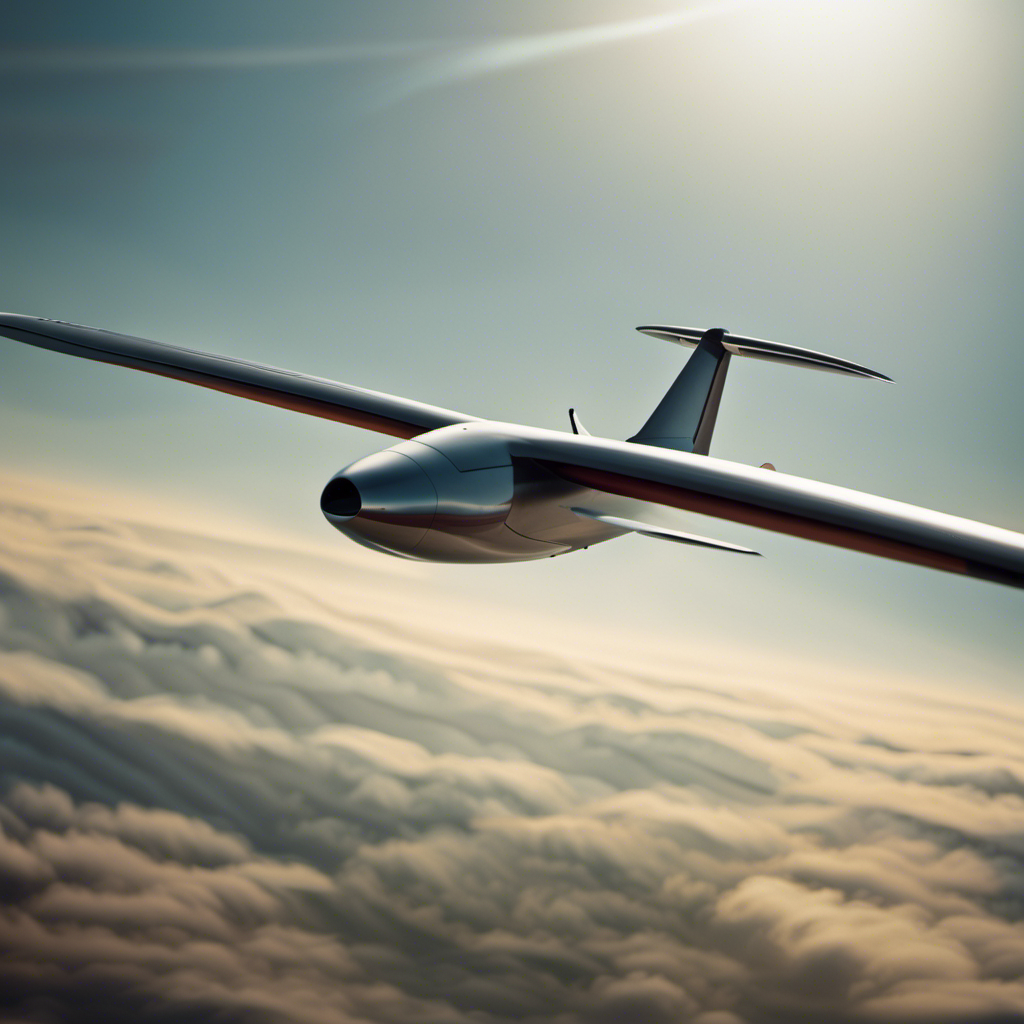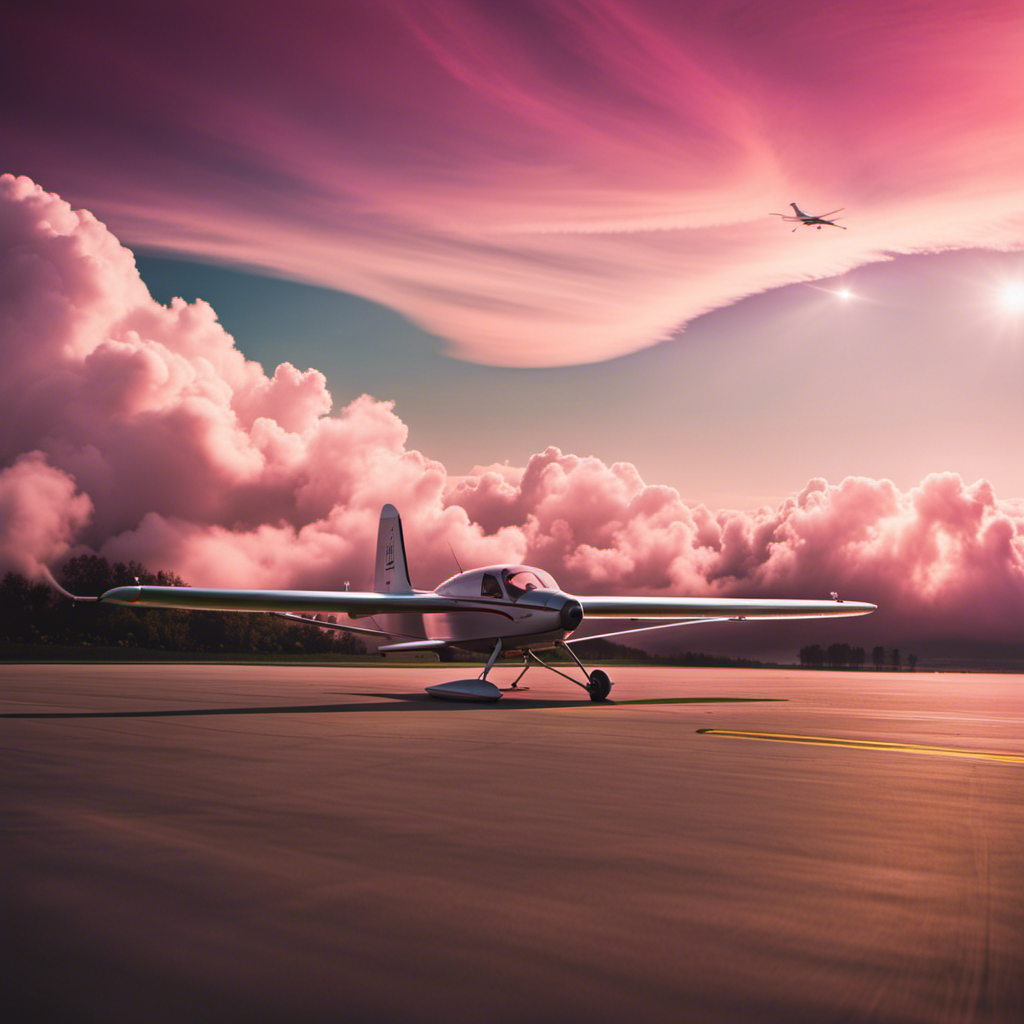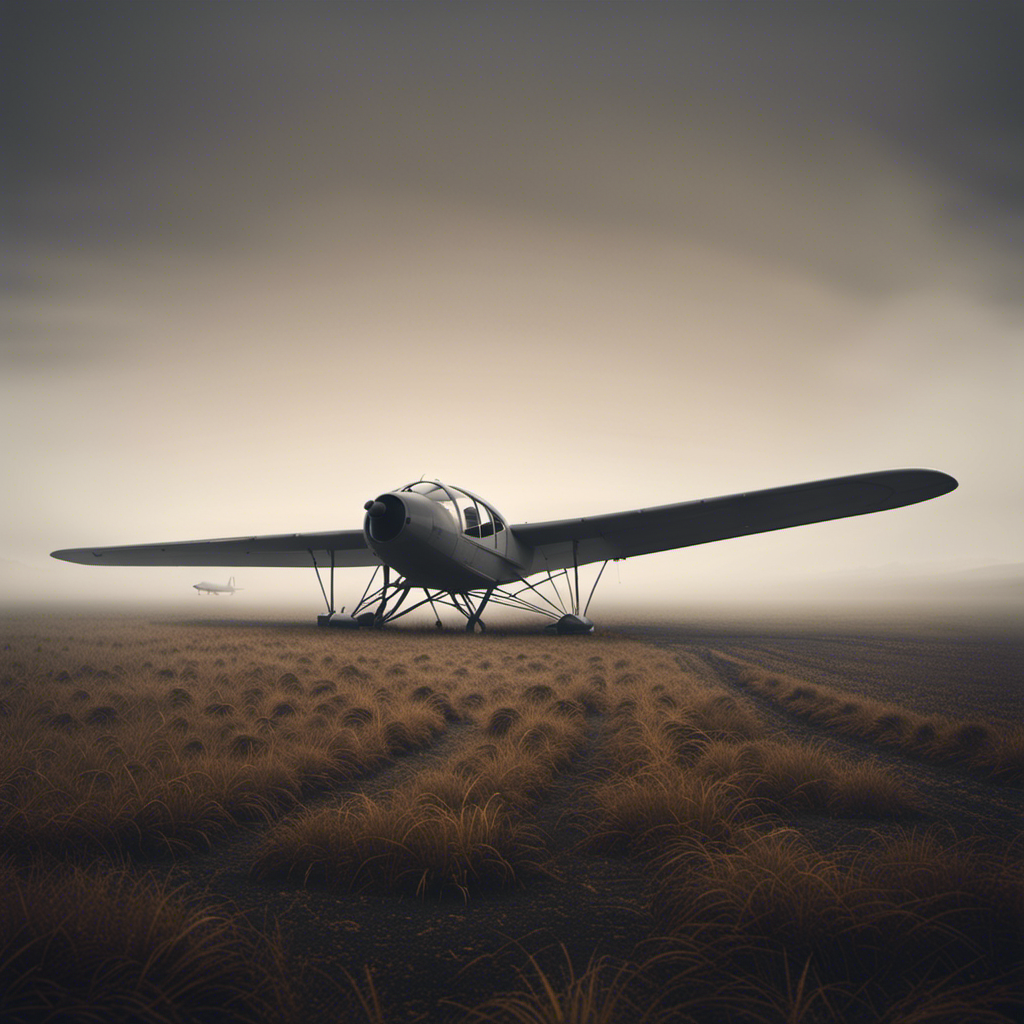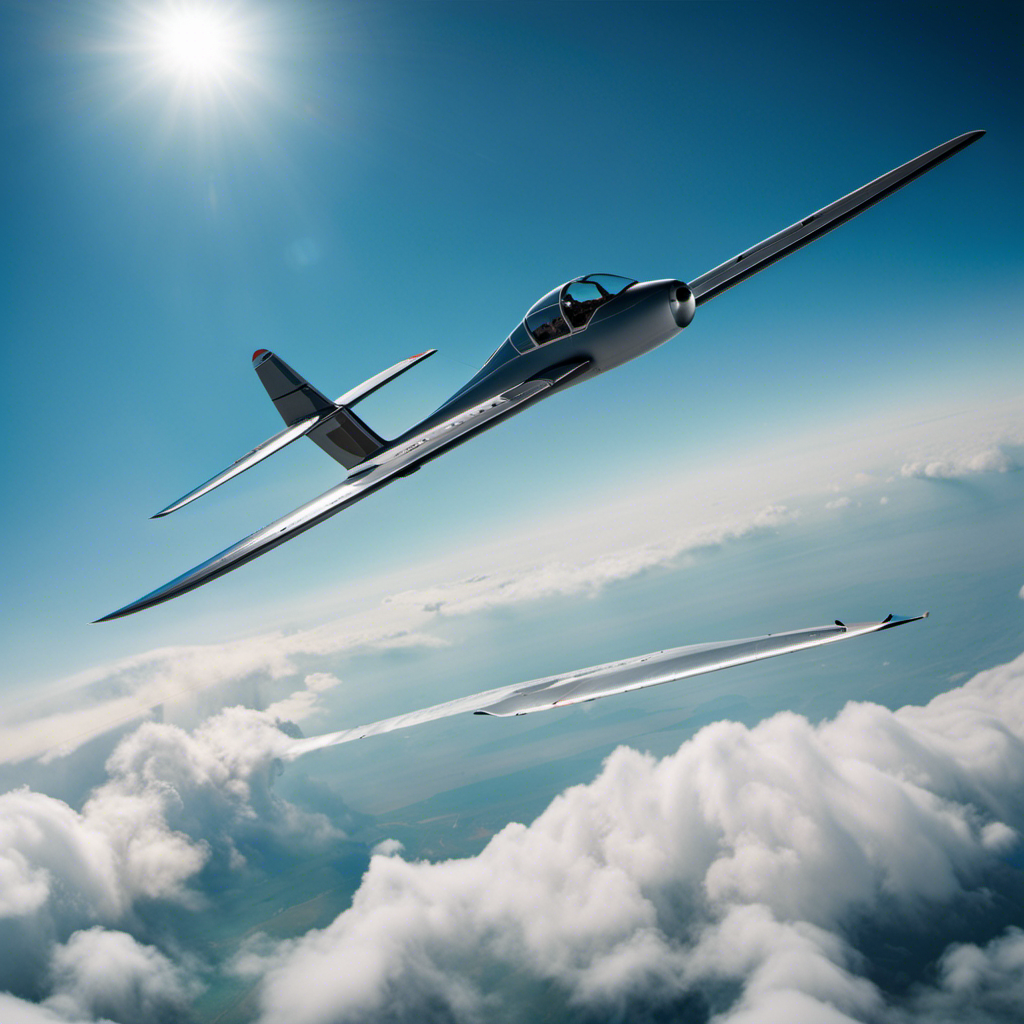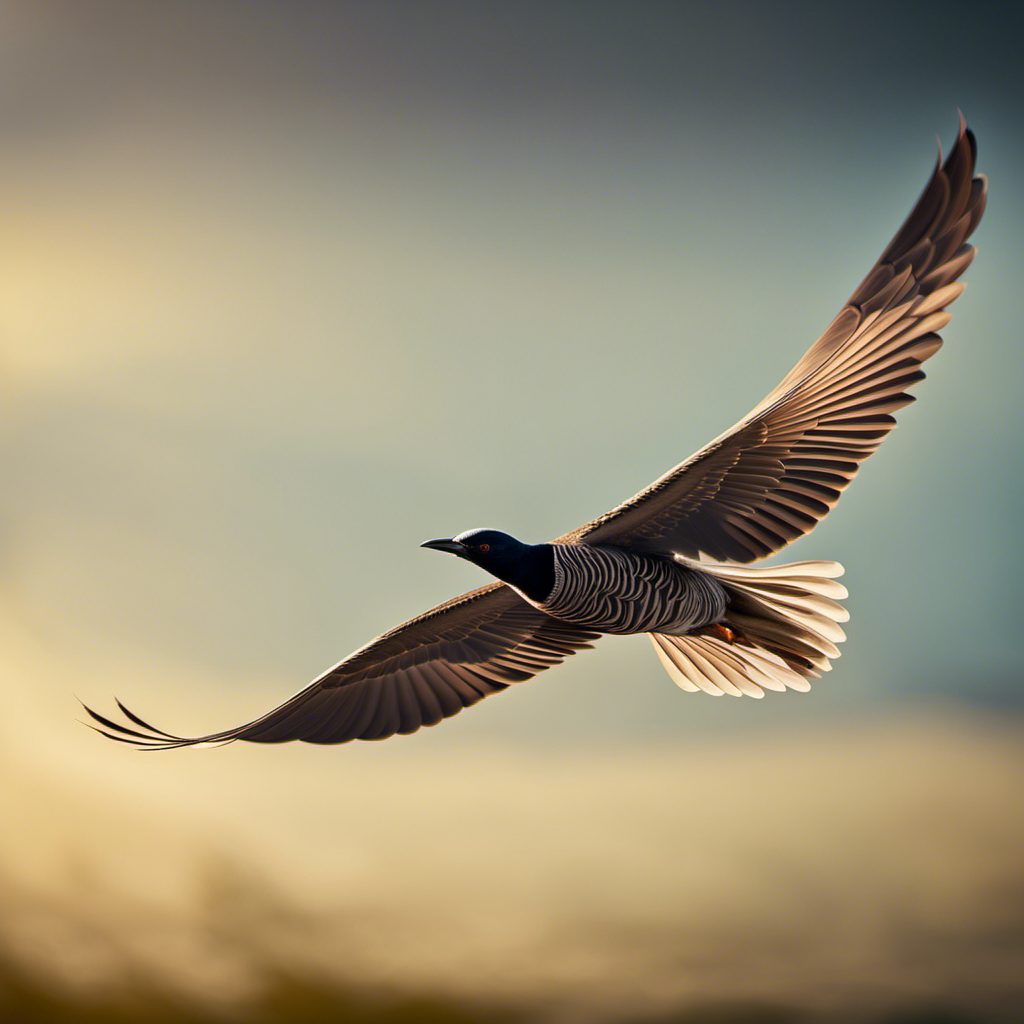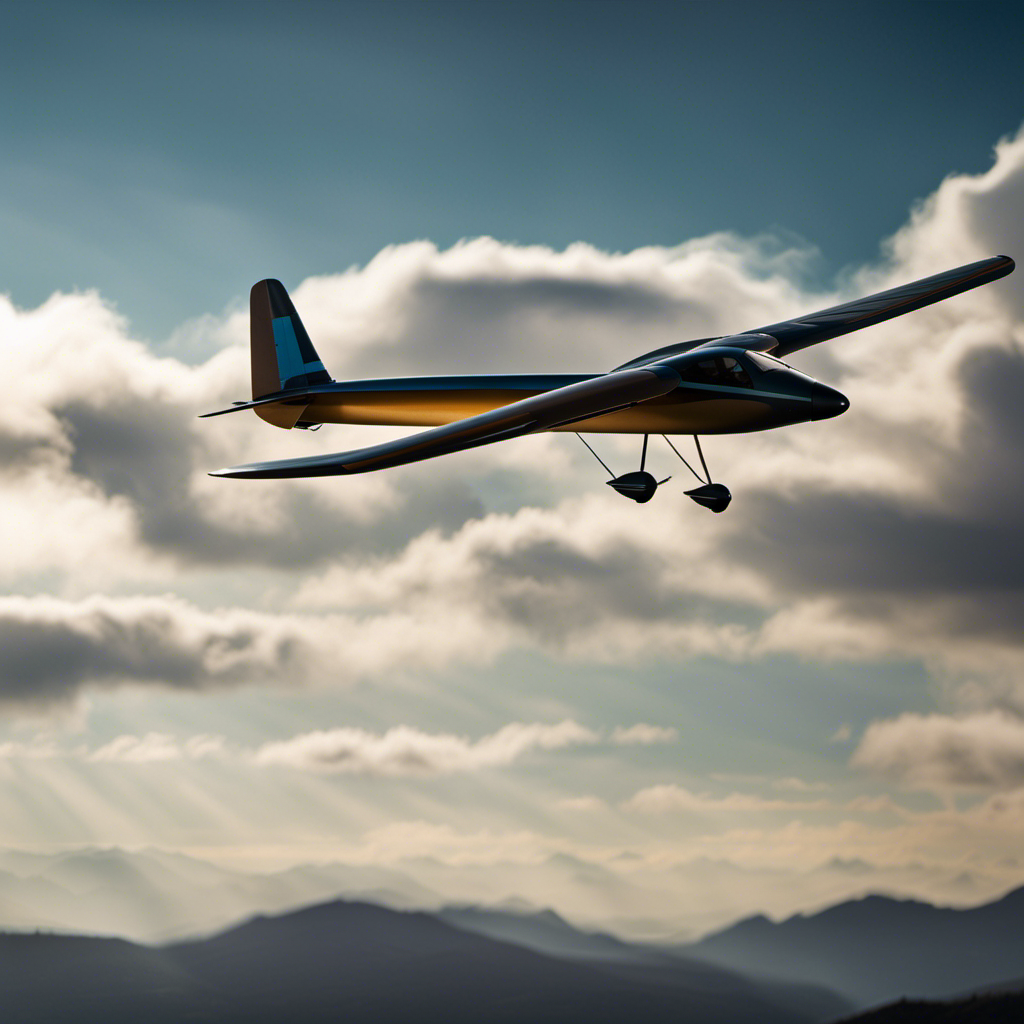Have you ever wondered how gliders are able to soar through the sky, defying gravity without the use of an engine? Get ready as we delve into the fascinating world of glider aviation.
In this article, we’ll explore the fascinating mechanics behind glider flight, from the role of lift and weight balance to the utilization of air currents and thermals.
Get ready to experience the exhilaration of gliding as we delve into the intricate details of wing design, safety measures, and the training required to become a certified glider pilot.
Key Takeaways
- Wing shape and characteristics are crucial for optimal glider performance.
- Wing efficiency, achieved through factors like wing aspect ratio, airfoil shape, and wing loading, is essential for maintaining altitude during flight.
- Understanding wing efficiency helps pilots make informed decisions about glider performance.
- Wing design minimizes drag and maximizes lift, allowing gliders to glide for extended periods.
Understanding the Basics of Glider Flight
To understand the basics of glider flight, you need to know how gliders generate lift and maintain their altitude. Glider aerodynamics plays a crucial role in achieving this.
Gliders are designed with a specific shape and structure to maximize lift and minimize drag. The wings of a glider are shaped in a way that creates a pressure difference between the top and bottom surfaces. This pressure difference generates lift, allowing the glider to stay airborne.
Understanding flight mechanics is also essential in glider flight. Pilots manipulate the controls to control the attitude and direction of the glider, using the principles of physics to their advantage. By adjusting the angle of attack, weight distribution, and airspeed, pilots can maintain altitude and achieve the desired flight path.
Transitioning into the subsequent section, the role of lift in glider flight is crucial for maintaining sustained flight.
The Role of Lift in Glider Flight
The role of lift is crucial in how gliders are able to stay airborne. Lift is the aerodynamic force that opposes the force of gravity, allowing gliders to maintain altitude and sustain flight. It is generated by the shape of the wings and the flow of air over them. When air flows over the wings, it creates a pressure difference between the upper and lower surfaces. This pressure difference generates lift, which acts perpendicular to the direction of the airflow. To better understand the role of lift, let’s examine the aerodynamic forces acting on a glider in the table below:
| Aerodynamic Forces | Direction |
|---|---|
| Lift | Upward |
| Gravity | Downward |
| Drag | Opposite |
As we can see, lift opposes the force of gravity, enabling gliders to overcome the downward pull and achieve flight. This highlights the importance of lift in glider flight. Now, let’s move on to the subsequent section to explore the importance of weight and balance in maintaining stability and control during flight.
The Importance of Weight and Balance
Maintaining proper weight and balance is crucial for achieving stability and control during flight. In a glider, weight distribution plays a significant role in determining the flying characteristics. Here are three key points to consider:
-
Center of Gravity (CG): The CG is the point where the glider’s weight is concentrated. It is essential to ensure that the CG remains within the specified limits to maintain stability. Shifting the CG too far forward or backward can affect the glider’s handling and maneuverability.
-
Weight Distribution: Distributing the weight evenly across the glider is vital for optimal performance. Uneven weight distribution can lead to an imbalance and make the glider difficult to control. Pilots must ensure that passengers, cargo, and fuel are properly distributed to maintain the desired flight characteristics.
-
Adjusting Ballast: Gliders often use ballast, such as water, to achieve the desired weight distribution. Adding or removing ballast can help adjust the glider’s center of gravity and optimize its performance for different flight conditions.
By understanding and managing weight distribution and the center of gravity, glider pilots can achieve the necessary stability and control in flight.
Transitioning into the subsequent section, let’s explore how gliders utilize air currents and thermals to stay aloft and soar through the skies.
Utilizing Air Currents and Thermals
Utilizing air currents and thermals helps glider pilots stay aloft and soar through the skies. By understanding the behavior of air masses and the formation of thermals, pilots can navigate their gliders more efficiently.
Air masses, large bodies of air with similar temperature and humidity characteristics, play a crucial role in glider flight. Pilots can use the lift generated by the rising warm air within a thermal to gain altitude. Another technique, ridge soaring, involves flying along the slopes of mountains or hills to take advantage of the upward air currents created by the wind hitting the terrain.
These techniques allow glider pilots to maximize their flight time and cover greater distances. Transitioning into the next section, controlling glide path and speed is essential for maintaining a safe and efficient flight.
Controlling Glide Path and Speed
To control your glide path and speed effectively, focus on adjusting your body positioning and manipulating the control surfaces of the glider. By varying the angle of attack and using the ailerons, elevators, and rudder, you can maintain a controlled descent and maneuver the glider with precision. Let’s take a closer look at these control surfaces and their functions:
| Control Surface | Function |
|---|---|
| Ailerons | Control roll and banking |
| Elevators | Control pitch and nose-up or nose-down attitude |
| Rudder | Control yaw and side-to-side movement |
Techniques for Sustained Soaring
To maximize your time in the air and stay aloft for extended periods, it’s important to understand the techniques for sustained soaring. Here are some key strategies for optimizing flight performance:
-
Seek out thermals: Thermals are columns of rising warm air that can provide lift for gliders. By carefully observing cloud formations and other visual cues, pilots can locate and ride thermals to gain altitude.
-
Use ridge lift: When wind encounters a slope, it can create an upward draft known as ridge lift. By flying close to the ridge, pilots can take advantage of this lift and maintain altitude.
-
Employ dynamic soaring: This technique involves using the difference in wind speed between different altitudes to generate lift. By flying in a zigzag pattern, pilots can harness this energy and extend their flight time.
-
Utilize wave lift: Wave lift occurs when wind encounters a mountain range and creates a series of standing waves in the air. By flying in these waves, pilots can gain altitude and stay aloft for longer periods.
-
Practice energy management: By constantly monitoring their speed, altitude, and control inputs, pilots can efficiently manage the energy of their glider and make adjustments to optimize flight performance.
Understanding and utilizing these sustained soaring techniques is crucial for glider pilots to stay in the air for extended periods.
Now, let’s dive into the role of wing design in glider flight, where the shape and characteristics of the wings play a vital role in achieving optimal performance.
The Role of Wing Design in Glider Flight
When it comes to wing design in glider flight, the shape and characteristics of the wings are essential for achieving optimal performance. Wing efficiency plays a crucial role in the overall effectiveness of a glider.
The principles of aerodynamics guide the design process, ensuring that the wings generate sufficient lift to keep the glider airborne. The wings are carefully engineered to minimize drag and maximize lift, allowing the glider to maintain altitude and glide for extended periods.
Wing efficiency is achieved through careful consideration of factors such as wing aspect ratio, airfoil shape, and wing loading. By optimizing these parameters, glider designers can achieve higher lift-to-drag ratios and improve the glider’s overall performance.
With wing design playing such a critical role, it is vital for glider pilots to familiarize themselves with the principles and characteristics that govern wing efficiency. This knowledge allows pilots to understand how their glider performs in different flight conditions, enabling them to make informed decisions during flight.
Transitioning into the subsequent section on safety measures and pre-flight checks, it is imperative for pilots to ensure that their glider’s wings are in optimal condition before embarking on any flight.
Safety Measures and Pre-flight Checks
Transition: Now that we understand the role of wing design in glider flight, it is crucial to discuss the safety measures and pre-flight checks that are essential before taking to the skies.
Current Subtopic: Safety Measures and Pre-flight Checks
-
Inspect the glider thoroughly: Check for any signs of damage or wear on the wings, control surfaces, and landing gear.
-
Verify the control system: Ensure that all control surfaces move freely and that the control cables are in good condition.
-
Check the cockpit instruments: Verify the functionality of the altimeter, airspeed indicator, and variometer to ensure accurate readings during the flight.
-
Review emergency procedures: Familiarize yourself with the emergency checklist and practice emergency landings to be prepared for unexpected situations.
Transition: By diligently following these safety measures and completing thorough pre-flight checks, glider pilots can ensure a safe and successful flight. However, before taking off, it is important to undergo comprehensive training and certification.
Training and Certification for Glider Pilots
Glider pilots must undergo comprehensive training and obtain certification to ensure their competence and safety in the skies. The training techniques for glider pilots focus on developing their skills in controlling the glider’s flight, navigating various weather conditions, and responding to emergency situations.
The training program typically includes ground school lessons, flight simulations, and practical flying exercises. Additionally, aspiring glider pilots are required to pass written and practical exams to obtain their glider pilot certification. This certification demonstrates their knowledge and proficiency in operating gliders safely and effectively.
By following these rigorous training techniques and obtaining the necessary certification, glider pilots can confidently explore the thrill of glider flight, experiencing the freedom and exhilaration of soaring through the air without an engine.
Exploring the Thrill of Glider Flight
To truly experience the sheer joy of glider flight, you’ll need to embrace the freedom and exhilaration of soaring through the air without an engine. Gliding is a unique form of aviation that allows you to explore the aerodynamics of flight in its purest form.
Here are four key factors that contribute to the incredible experience of glider flight:
-
Lift: Gliders rely on the upward force of air to stay aloft. By understanding the principles of lift, you can maximize your time in the air and explore the different types of lift available.
-
Thermals: These rising columns of warm air can provide significant lift for gliders. By skillfully maneuvering within thermals, you can climb to higher altitudes and extend your flight time.
-
Ridge lift: When wind encounters a ridge or mountain, it is forced upward, creating an upward force that gliders can exploit. By flying close to the ridge, you can harness this lift and experience the thrill of soaring along the terrain.
-
Wave lift: In certain weather conditions, wind can create standing waves in the atmosphere, similar to waves in the ocean. Gliders can ride these waves to gain altitude and explore the upper reaches of the sky.
Experiencing the freedom of glider flight allows you to truly appreciate the beauty and intricacy of aerodynamics while soaring through the air.
Frequently Asked Questions
Can gliders fly at night?
No, gliders cannot fly at night due to safety considerations. Nighttime glider operations are restricted because of limited visibility, increased risks of collisions, and difficulties in navigating without visual references.
What are the limitations of glider flight in adverse weather conditions?
The limitations of glider flight in adverse weather conditions include reduced visibility, turbulent air currents, and limited maneuverability. These conditions can make it challenging to safely navigate and control the glider, posing risks to the pilot and the aircraft.
Are there any age restrictions for glider pilots?
Age restrictions for glider pilots vary by country. In the United States, pilots must be at least 14 years old to solo, and 16 years old to obtain a glider pilot license. There are no specific physical requirements for glider pilots.
How long does it take to become a certified glider pilot?
To become a certified glider pilot, you must complete glider pilot training and meet the glider pilot license requirements. The time it takes to acquire this certification varies depending on the individual’s aptitude and dedication to training.
Are there any specific physical requirements for becoming a glider pilot?
To become a glider pilot, certain physical requirements must be met. These include meeting age restrictions and passing a medical exam. The certification process involves training in aerodynamics, flight controls, and emergency procedures.
Conclusion
In conclusion, glider flight is an exhilarating experience that relies on a delicate balance of aerodynamic principles and pilot skill. As I soared through the sky, harnessing the power of air currents and thermals, I felt like a bird in flight.
The careful attention to weight and balance, combined with the precise control of glide path and speed, allowed me to navigate the vast expanse of the sky with ease.
With the right training and certification, anyone can experience the thrill of glider flight and truly spread their wings.
With a heart that soars as high as the skies, Aria, affectionately known as “Skylark,” is the driving force behind Soaring Skyways. Her journey into the gliding world began as a young dreamer gazing up at the soaring birds, yearning to experience the weightlessness and freedom they embodied. With years of experience both in the cockpit and behind the scenes, Aria’s commitment to the gliding community is unwavering.
